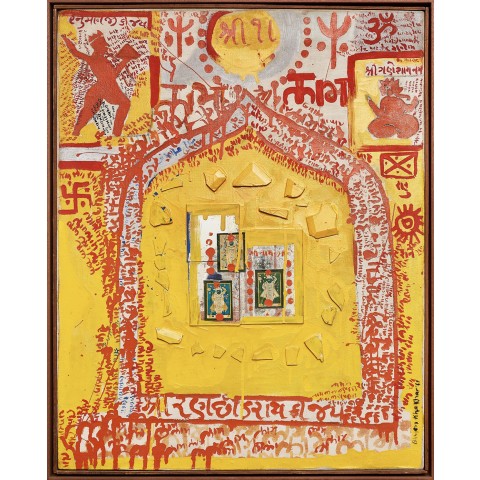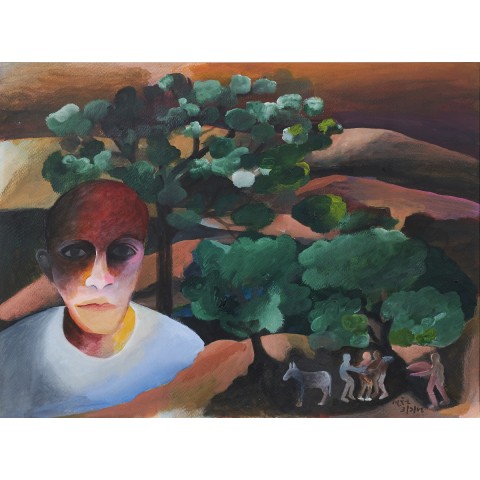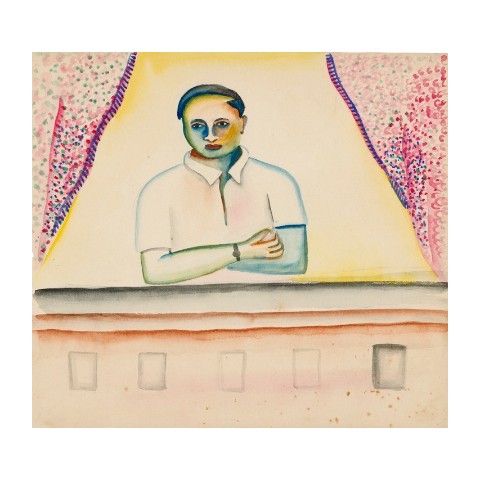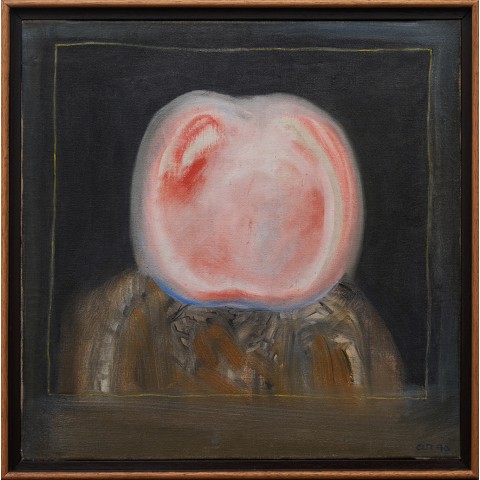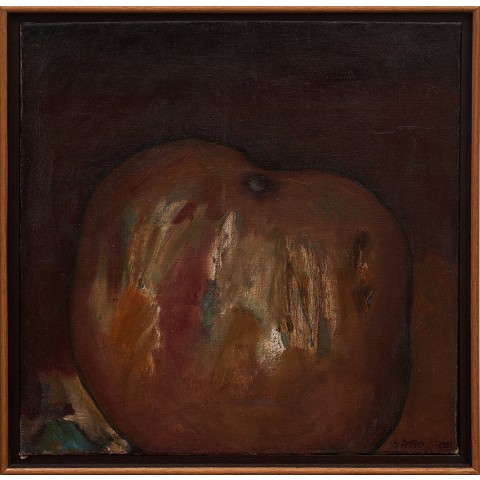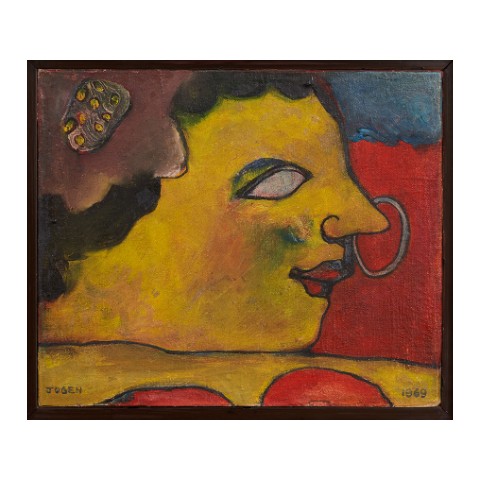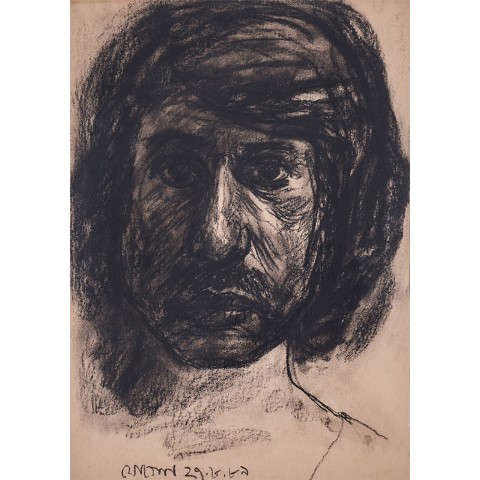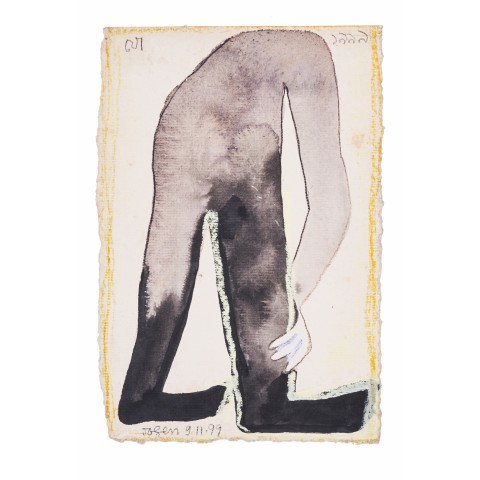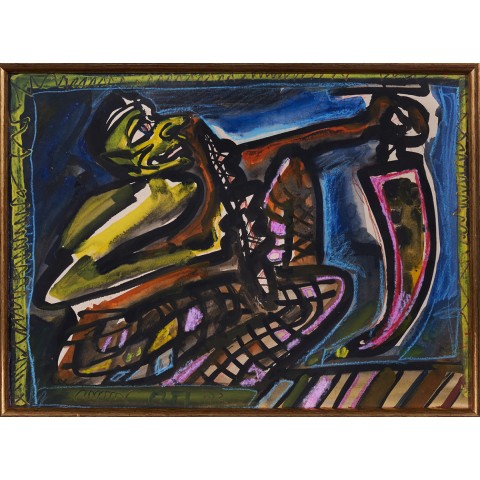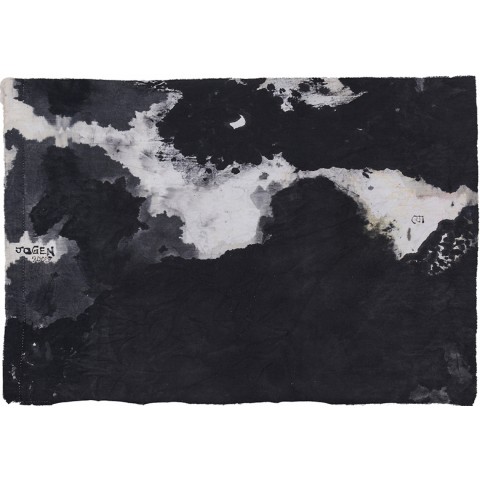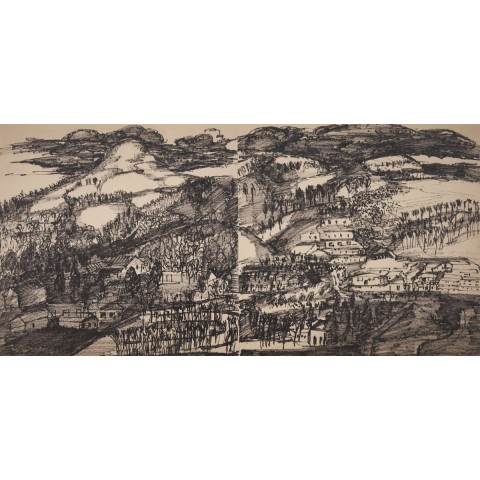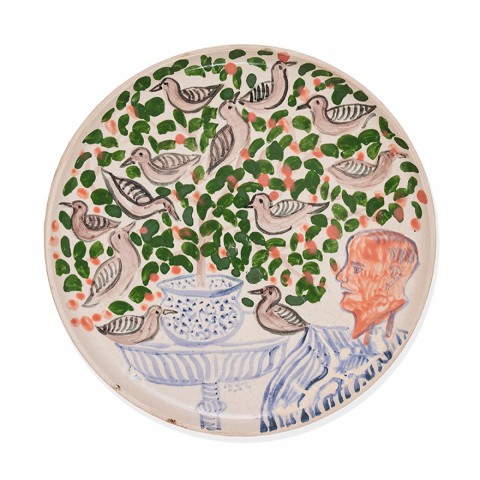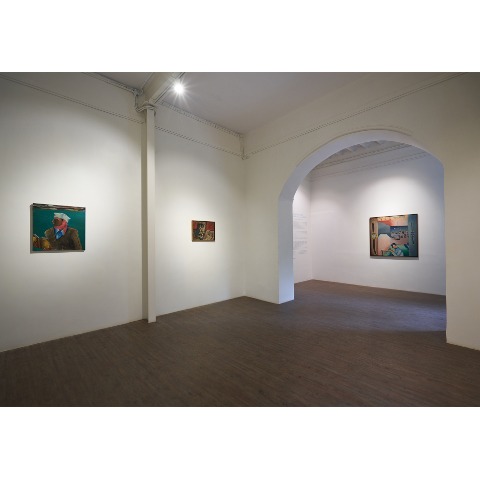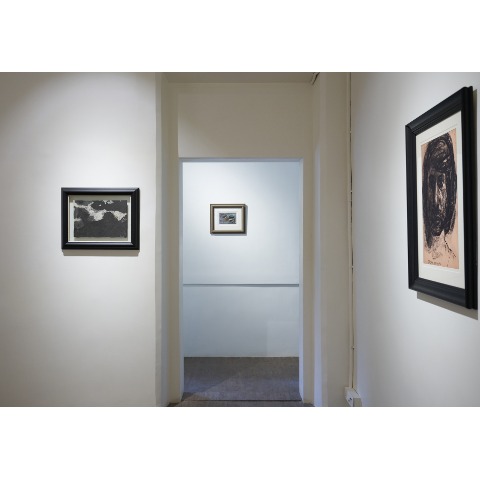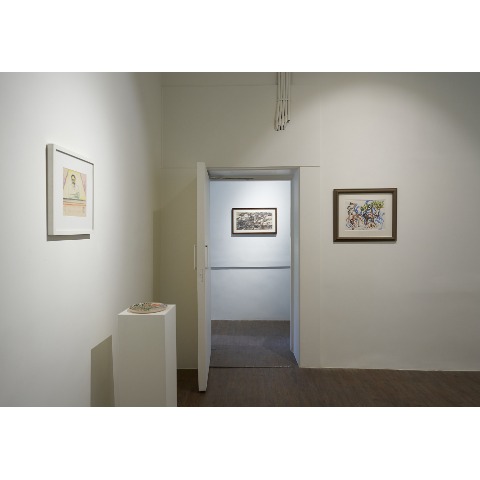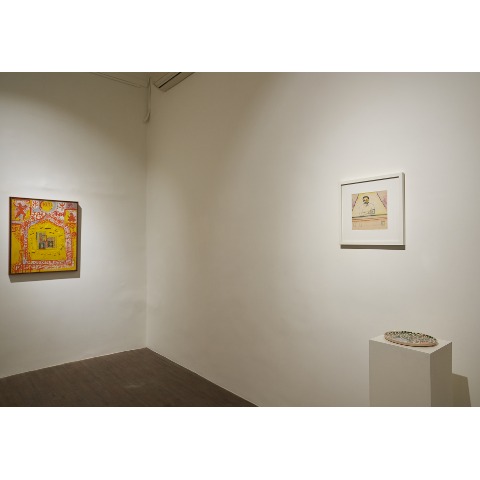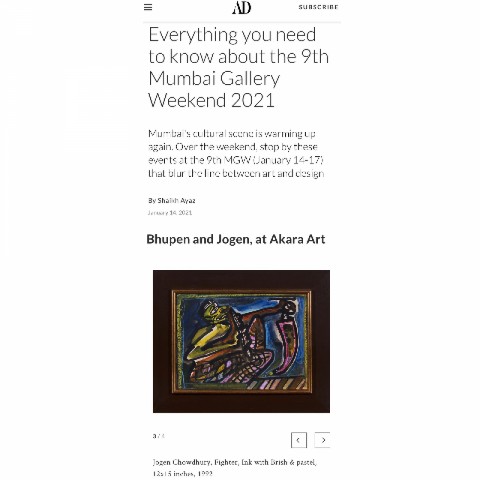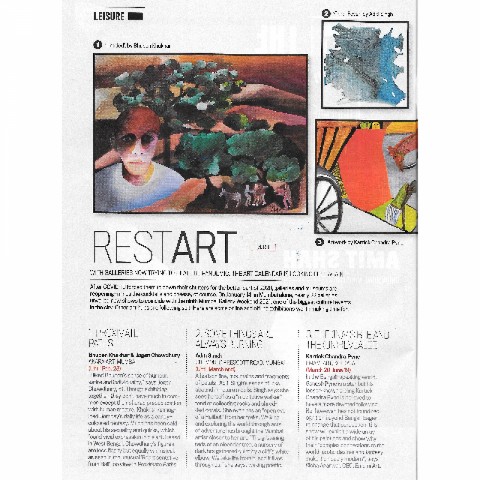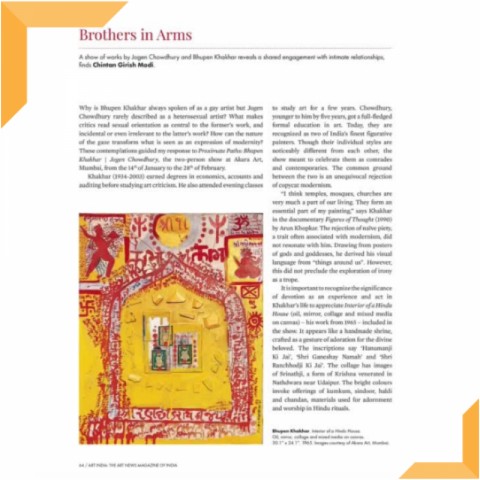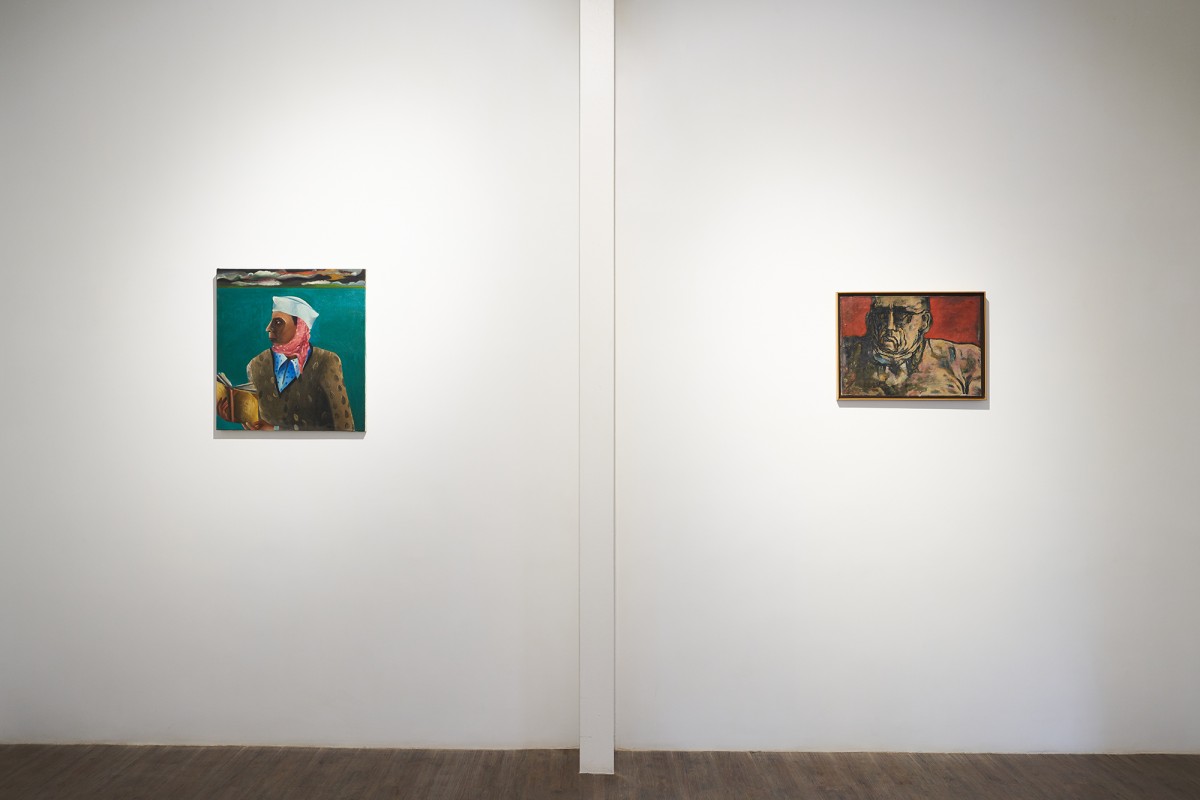
PROXIMATE PATHS: BHUPEN KHAKHAR | JOGEN CHOWDHURY
January 14 - February 28 , 2021
As a golden generation of figurative painters grew to maturity in India in the 1970s, Bhupen Khakhar and Jogen Chowdhury established themselves among the preeminent artistic voices to find full expression in that decade. Chowdhury was raised in a region of Bengal that became part of East Pakistan, Khakhar on the western coast, and their artistic beginnings were as far apart as that physical separation. Khakhar, entranced by the gaudiness of the street, its shrines, shops and banter, sought an Indian form of Pop, represented in the exhibition by an early collage in bright yellow. Chowdhury excelled within an academic framework, creating intense studies and introspective self-portraits, of which one of the latter finds place in the show.Their practice grew more closely aligned as Chowdhury incorporated aspects of Bengali folk and popular culture into his work, synthesising these with the classical traditions of India and Europe; and as both artists began defining the identity of their subjects through the prism of class and region. In depicting his local milieu, Chowdhury made fiercely satirical renderings of Bengal’s middle class. Khakhar, operating in a gentler mode, crafted beguiling portraits of tradespersons like barbers, tailors and watch repairers. The two artists were drawn into a larger movement towards politically engaged forms of narrative figuration, demarcated in Geeta Kapur’s catalogue essay accompanying the seminal 1981 exhibition Place for People, in which they showed alongside Gulammohammed Sheikh, Vivan Sundaram, Nalini Malani, and Sudhir Patwardhan.
Both grew increasingly interested in portraying carnal relationships, a concern well represented in the selection on view. Chowdhury depicted the complicated power relationships of heterosexual couples, conveying their twisted nature through physical deformations. Khakhar explored India’s gay subcultures and his own sexuality in compositions that were frequently tinged with melancholy. Though each developed an inimitable, instantly recognisable style, their working methods were poles apart. Chowdhury was and is a master draughtsman, a prolific virtuoso, while Khakhar, who came to painting late and pursued for many years a parallel career as a chartered accountant, found painting difficult. Though his triumphs were numerous, each was hard won.
The two followed proximate paths for much of their glittering careers. Chowdhury continues to be productive into his eighties, and recently concluded a five-year tenure in the Rajya Sabha, India’s upper house of parliament. Khakhar’s journey was cut short seventeen years ago, but it does not feel like he has been gone for so long thanks to paintings that continue to entrance, amuse, and captivate us.
Text by Girish Shahane
